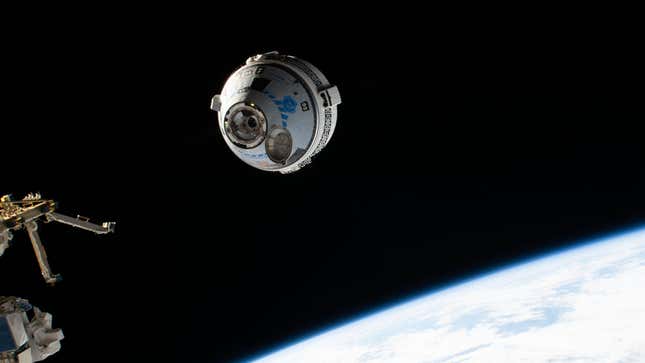
The Boeing Starliner is still docked to the International Space Station on its debut crewed mission. Due to issues with the spacecraft, the mission surpassed the 26-day mark on Friday. The NASA flight test was initially scheduled to last 10 days. Astronauts Butch Wilmore and Suni Williams don’t have a set date when they will return to Earth. NASA, for its part, has praised the Starliner for its ability to remain stranded at the ISS.
NASA can’t figure out the root cause behind the Starliner’s woes, but all the significant issues have been patched and the craft is nearly ready to return home. The helium leaks that delayed the initial May 6 launch stabilized, and all but one of the 28 thrusters are back online. The mission’s nature as a test flight meant the agency was prepared to spend as much time as possible ironing out faults. Space.com reported:
When Space.com asked how long the mission could continue, Stich said, “We haven’t decided how long to extend it yet.” Starliner has 12 different batteries, he explained. Before this flight, similar batteries sat on the ground for a year and were then tested to make sure there were no defects, and none were found.
“What we really are doing now is looking at the performance of the battery in flight. We don’t see any degradation in any of the cells where the batteries are,” he added.
The Boeing Starliner’s stay in orbit is limited by the crew module’s battery capacity. While the spacecraft is rated for 210 days, NASA stated there would be a 45-day limit, enough time for engineers on the ground to test fixes before re-entry. The agency is confident enough in the battery’s performance while recharging from the ISS that the Starliner will likely surpass the 45-day mark in orbit. Wilmore and Williams aren’t sitting on their hands as they wait. The pair are helping out the ISS crew with tasks onboard until the call finally comes to return home.

